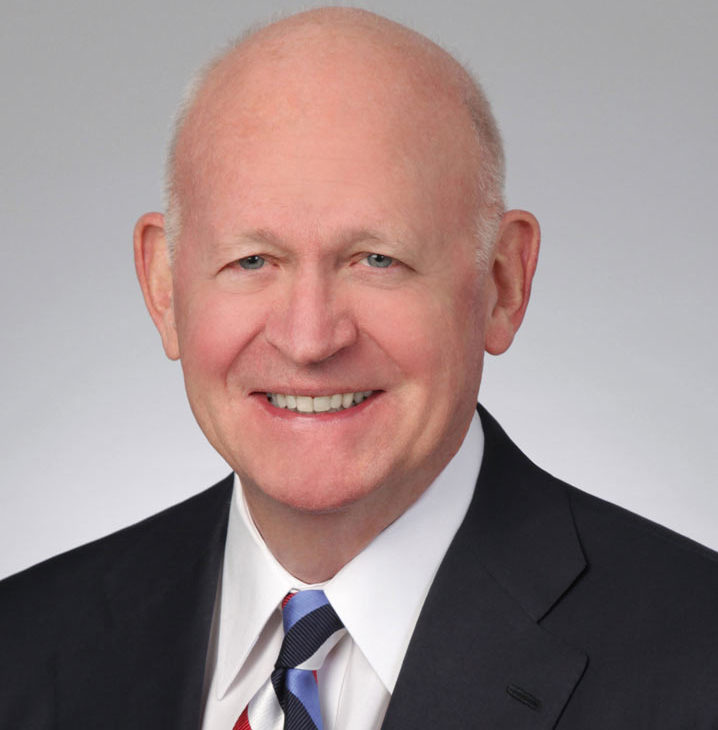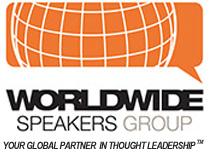
Born in California in 1945, Pillsbury was educated at Stanford University (B.A. in History with Honors in Social Thought) and Columbia University (M.A., Ph.D.). Major academic advisers to Pillsbury at Columbia were Zbigniew Brzezinski and Michel Oksenberg, who later played key roles in the Jimmy Carter administration on policy toward both China and Afghanistan. Pillsbury studied the art and practice of bureaucratic politics with Roger Hilsman, President John Kennedy’s intelligence director at the State Department and the author of Politics Of Policy Making In Defense and Foreign Affairs. At Stanford, Pillsbury’s academic mentor was Mark Mancall, author of two books on the influence of ancient traditions on Chinese foreign policy.
In 1969-1970 Pillsbury was the Assistant Political Affairs Officer at the United Nations. From 1971-72, he was a doctoral dissertation Fellow for the National Science Foundation in Taiwan, and in 1973-1977, Pillsbury was an analyst at the Social Science Department at RAND. In 1978, Pillsbury was a research fellow at the Center for Science and International Affairs at Harvard University.
During the Reagan administration, Dr. Pillsbury was the Assistant Under Secretary of Defense for Policy Planning and responsible for implementation of the program of covert aid known as the Reagan Doctrine. In 1975-76, while an analyst at the RAND Corporation, Pillsbury published articles in Foreign Policy and International Security recommending that the United States establish intelligence and military ties with China. The proposal, publicly commended by Ronald Reagan, Henry Kissinger, and James Schlesinger, later became US policy during the Carter and Reagan administrations.

Pillsbury served on the staff of four US Senate Committees from 1978-1984 and 1986-1991. As a staff member, Pillsbury drafted the Senate Labor Committee version of the legislation that enacted the US Institute of Peace in 1984. He also assisted in drafting the legislation to create the National Endowment for Democracy and the annual requirement for a DOD report on Chinese military power.
In 1992, under President George H. W. Bush, Pillsbury was Special Assistant for Asian Affairs in the Office of the Secretary of Defense, reporting to Andrew W. Marshall, Director of Net Assessment. Michael Pillsbury is a member of the Council on Foreign Relations and the International Institute for Strategic Studies.
Pillsbury played a role in three Presidential actions:
Role in US-China Military and Intelligence Ties
Pillsbury participated in President Carter’s decision in 1979-80, as modified by President Reagan in 1981, to initiate military and intelligence ties with China.
According to Raymond L. Garthoff, “Michael Pillsbury first floated the idea of arms sales and broad range of American military security relationships with China in a much-discussed article in Foreign Policy in the fall of 1975. Not known then was that Pillsbury had been conducting secret talks with Chinese officials… his reports were circulated to a dozen or so top officials of the NSC, Department of Defense and Department of State as secret documents.” According to the book US-China Cold War Collaboration, 1971-1989, “The man spearheading the effort was not a public official, and enjoyed deniability. Michael Pillsbury, a China analyst at the RAND Corporation… spent the summer of 1973 secretly meeting PLA officers stationed under diplomatic cover at China’s UN mission… The DoD managed Pillsbury. Pillsbury filed a report, L-32, in March 1974… L-32 was a seminal paper on which subsequent US-PRC military cooperation blossomed.” James Mann wrote, “Outward appearances indicate that Pillsbury may have been working with Amerian intelligence agencies from the very start of his relationship with General Zhang… In the fall of 1973, Pillsbury submitted a classified memo suggesting the novel idea tha the United States might establish a military relationship with China… This was the genesis of the ideas of a ‘China card,’ the notion that the United States might use China to gain Cold War advantage over the Soviet Union. The idea would eventually come to dominate American thinking about the new relationship with China.”
Role in the Stingers for Afghanistan Decision
Pillsbury participated in President Reagan’s decision in 1986 to order the CIA to arm the Afghan resistance with Stinger missiles. According to the UN Undersecretary General who negotiated the Soviet withdrawal from Afghanistan, “Initially, the Stinger campaign was spearheaded by Undersecretary of Defense for Policy Fred Ikle and his aggressive Coordinator for Afghan Affairs, Michael Pillsbury… The Stinger proponents won their victory in the face of overwhelming bureaucratic resistance that persisted until the very end of the struggle.” Mann wrote, “For Michael Pillsbury, the covert operations in Afghanistan represented the fulfillment of the decade-old dream of American military cooperation with China… To help him win the argument, Pillsbury made use of his China connections.” George Crile stated in Charlie Wilson’s War that, “Ironically, neither [Gust] Avrakotos nor [Charlie] Wilson was directly involved in the decision and claims any credit.”
Harvard University’s JFK School of Government published what it called the first case study of how covert action policy is made and describes the role of Michael Pillsbury. According to Charlie Wilson’s War, “The moving force in this group was an engaging, well-born conservative intellectual named Mike Pillsbury, then serving as the Pentagon’s deputy undersecretary in charge of overseeing covert programs. Pillsbury, a former Senate staffer and China expert, had been an early believer in the program…” According to Philip Heymann in his 2008 book Living the Policy Process, “A policy player such as Michael Pillsbury may have absorbed many of the critical rules of the game of shared policy choice without even thinking of them as rules.”
Heymann wrote that “providing Stinger missiles was obviously of such importance or political prominence that the President would want to decide. This decision is obviously of that character for several reasons. If approved, we may be furnishing a terrifying weapon to a present or future enemy. There is a small chance that we will encourage dangerous forms of retaliation by the Soviet Union. Even the shift from a “plausibly deniable” covert action to the open support of a guerrilla force fighting the Soviet Union would raise issues in Congress that the President would want to consider in light of his staff’s advice.”
Pillsbury worked through the secret Planning and Coordination Group. Heymann wrote, “This committee was secret, and public details about it are sketchy… The covert action committee met every three to four weeks. Its existence was not officially acknowledged, although such a committee had operated in every administration since Eisenhower. In the Kennedy administration, for example, it was known as the Forty Committee. Any information on covert actions was protected under a compartmentalized security system given the name VEIL.”
According to Steve Coll, in 1985-1986 Osama Bin Laden also wanted US weapons including the Stinger missiles. Coll wrote, “Michael Pillsbury flies to the Afghan frontier to review training facilities used by two Afghan warlords, Gulbuddin Hekmatyar and Abdul Rasul Sayyaf… Bin Laden family head Salem bin Laden asks the Pentagon to supply anti-aircraft missiles to Arab volunteers fighting in the Soviet-Afghan War. The request is made on behalf of Salem’s brother Osama [Bin Laden], who is establishing a semi-autonomous group of Arab volunteers outside the direct control of local Afghan commanders and will set up a camp just for Arabs later this year… Later research will indicate that there is no formal decision by the Reagan administration not to supply the missiles or other equipment to the Arab volunteers. Pentagon official Michael Pillsbury will later say he was not aware of any such decision, but if such a decision had been taken, he would have been aware of it.”
Studies of China and the Pentagon’s Annual Report
In 1997-2007, Pillsbury published research reports and two books on China’s view of future warfare. According to the Wall Street Journal in 2005, Pillsbury’s findings were added to the reports the Secretary of Defense sent to Congress on Chinese military power in 2002-2005. In 2003, Pillsbury signed a nonpartisan report of the Council on Foreign Relations task force on Chinese military power. The task force found that China is pursuing a deliberate course of military modernization, but is at least two decades behind the United States in terms of military technology and capability. The task force report stated it was a “nonpartisan approach to measuring the development of Chinese military power.”
Michael Pillsbury’s Government Positions:
- Consultant at US Department of Defense 2004-present
- Senior Research Advisor at US-China Economic and Security Review Commission 2003-2004
- Policy Advisory Group at United States Department of Defense 2001-2003
- Visiting Research Fellow at National Defense University, 1997-2000
- Special Government Employee at US Department of Defense (Defense Science Board) 1998-2000
- Research Consultant at US Agency for International Development 1991-1995
- Special Assistant to Director of Net Assessment US Department of Defense 1992-1993
- Congressional Afghan Task Force Senate Staff Coordinator at US Senate 1986-1990
- Assistant Under Secretary for Policy Planning at US Department of Defense 1984-1986
- Professional Staff at US Senate 1978-1981
- Acting Director, Arms Control and Disarmament Agency at US Department of State 1981
Affiliations:
- Member of the Cosmos Club
- Member of the Board of Directors, Freedom House, Washington, DC, 2016-2018
- Member, Christ Church, Georgetown, Confirmed by Bishop Gene Robinson in the Washington National Cathedral May 2017
- Member of the Advisory Council, Woodrow Wilson Center for Scholars, Washington DC
- National Geographic Society, Member of Council of Advisors and Founding Co-chairman of the Explorers Society, 2012-2014
- Member of the Oldest Hereditary Organization in America the Society of the Cincinnati based on descent from a Regular Officer in George Washington’s Continental Army
- Chairman of the Task Force on Preservation of Revolutionary War Battlefields of the Society of the Cincinnati, 2017
- Member of the National Society of the Sons of the American Revolution
- Member of the National Society of Sons and Daughters of the Pilgrims as a Twelfth Generation Hereditary Descendant of William H Pillsbury who arrived in the Massachusetts Bay Colony in 1640 from England
- Member of English Heritage Society, London UK and Donor for the Preservation of Pillsbury Castle, Peak District, Great Britain
- Eagle Donor to Republican National Committee, reportedly donated over $100,000 since 2008
- Member, Republican Governors Association, Executive Roundtable, 2014-present
- Member of Washington DC Republican GOP Advisory Council, 2012-present
- Director of the Center on Chinese Strategy, Hudson Institute, 1201 Pennsylvania Ave, Washington DC, 2014-2023
- Author of number one National Bestseller, The Hundred- year Marathon, also published in Korean, Japanese, Taiwan-Chinese and PRC-Chinese edition published by Chinese National Defense University, and published in Hindi and Mongolian; selected as “one of the 10 best books of the year” by the Christian Science Monitor; selected by the Commander, US Special Operations Command for Commanders Reading List, 2017
- Member of the Board of Directors, French American Cultural Foundation, 1430 New York Ave, Washington, DC, 2015-present
- Member of the George Washington’s Mount Vernon, Alexandria, VA, 2014-present
- Member, National Trust for Historic Preservation



